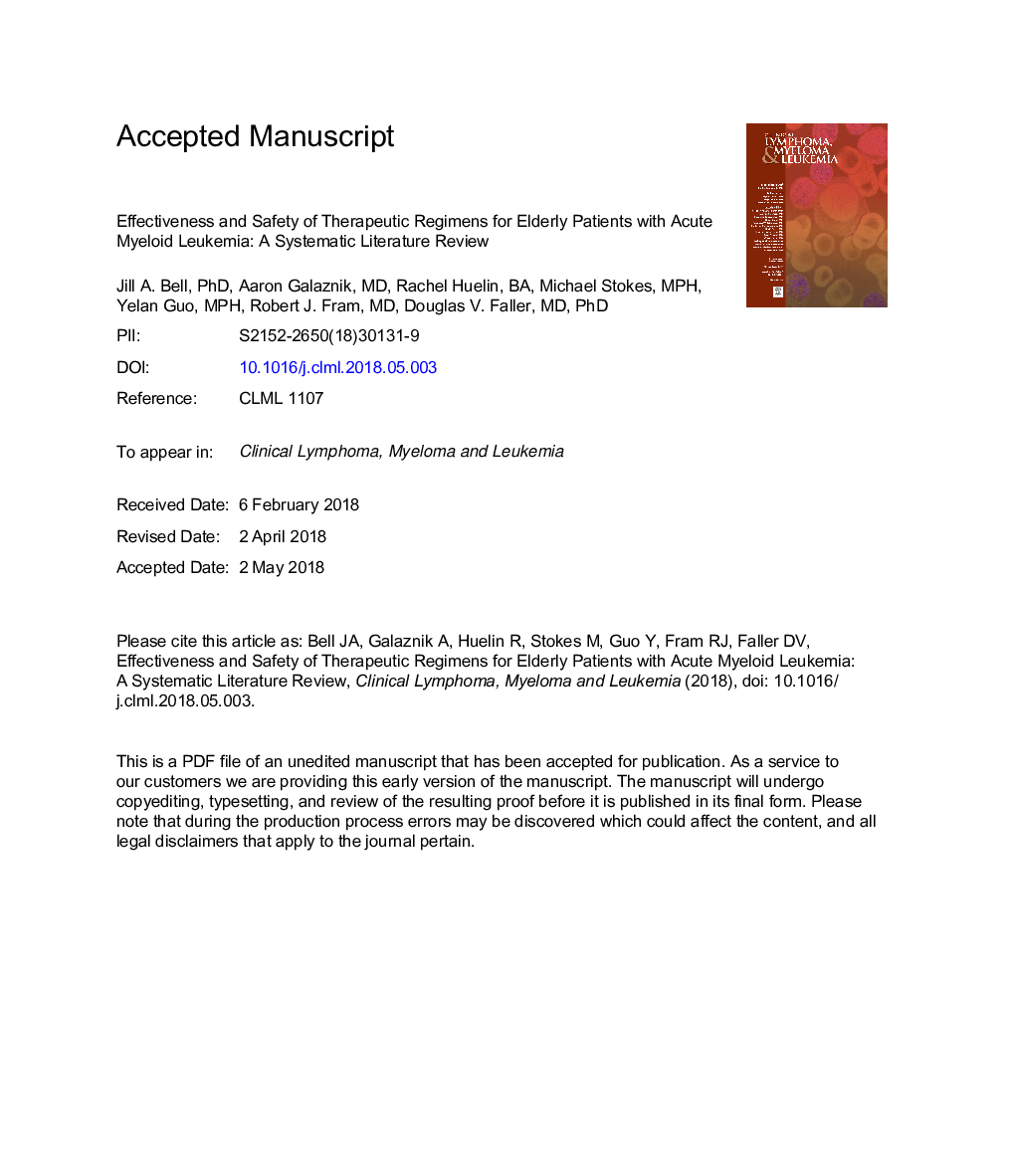| Article ID | Journal | Published Year | Pages | File Type |
|---|---|---|---|---|
| 8615388 | Clinical Lymphoma Myeloma and Leukemia | 2018 | 42 Pages |
Abstract
Acute myeloid leukemia (AML) is the second most common leukemia among adults. Although the median age at diagnosis is 67 years, with approximately one third of patients aged 75 years or older, limited treatment options exist for the elderly, who have 5-year survival rates of only 5%. A systematic review was conducted to examine effectiveness and safety outcomes of treatment regimens in elderly (â¥60 years old) patients with AML. Published literature on the topic was scant, and the review included only 22 articles examining outcomes. Twelve studies examined treatment-specific outcomes; most of these examined azacitidine or intensive chemotherapy (IC). An international randomized controlled trial found that azacitidine significantly improved overall survival relative to conventional regimens including IC and low-dose cytarabine in patients aged > 65 years. Similar results in favor of azacitidine were demonstrated in 2 other studies. IC was generally associated with longer survival versus lower-intensity therapy or best supportive care. Findings suggest that azacitidine is a viable option for elderly AML patients who are ineligible for IC, and emerging agents used in combination with azacitidine could have a major impact in this difficult-to-treat population.
Related Topics
Health Sciences
Medicine and Dentistry
Anesthesiology and Pain Medicine
Authors
Jill A. Bell, Aaron Galaznik, Rachel Huelin, Michael Stokes, Yelan Guo, Robert J. Fram, Douglas V. Faller,
